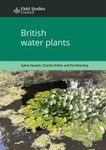About this book
Simplistic thinking would have us believe that by eliminating the loading of a given pollutant, an aquatic system will revert to its previous pristine state. This premise is without scientific verification. Besides the fact that typically very little documentation exists defining what exactly that previous pristine state was, it should be noted that biological processes are non-linear. They reflect adaptations by populations and corresponding responses of trophic organization that are not predictable by linear models of recovery.
Restoration of Aquatic Systems makes a clear delineation between genuine restoration and public perception of restoration efforts. Written by Robert Livingston, one of the foremost international authorities on ecosystem studies of freshwater, estuarine, and marine environments, this work is the final volume of a trilogy derived from 70 field-years of data garnered from 10 different coastal systems on the Atlantic and Gulf coasts. The text provides a synthetic look at the restoration of aquatic systems, emphasizing the functional basis that supports such activities, followed by a review of the evidence of recovery.
Livingston considers numerous cases of scientific restoration; however, while the first two volumes could be considered pure science, this volume brings into play the impact of political as well as economic interests and where appropriate, media leverage. This work is thus concerned with just how effective the restoration process becomes as a product of a complex mixture of competing interests.
From this effort, an interdisciplinary comparative database has been created that is currently being published in a series of books and peer-reviewed scientific journals. This work is used to evaluate system-level processes that determine the effects of nutrient loading and nutrient dynamics on phytoplankton/benthic macrophyte productivity and associated food web responses.
Contents
DEFINITIONSThe Restoration Paradigm: Definitions. Ecosystem Research and Restoration. Human Impacts on Aquatic Systems. The Paradox of Actual Risks and Public Concerns. Factors for Successful Restoration.NORTH FLORIDA AS A MICROCOSM OF THE RESTORATION PARADIGM CULTURAL EUTROPHICATION OF NORTH FLORIDA LAKESBackground of Solution (Sinkhole) Lakes: Urban Runoff and Solution Lakes. Lake Ecology Program. Urban Runoff and Lake Jackson - Background, Long-Term Cycles of Rainfall and Storm Water Runoff, Water Quality Changes, Sediment Changes. Submerged AquaticVegetation. Blue-Green Algae Blooms. Biological Response to Bloom-- Infaunal Macroinvertebrates, Fishes (Diseases, Distribution, Trophic Response to Algal Blooms, Long-Term Trends of Largemouth Bass Size). Lake Jackson Restoration Efforts. Urban Runoffand North Florida Lakes --Lake Hall, Lake Lafayette Basin, Lake Munson. Holding Pond Ecology. Press Coverage and Public Response. The Failure of Restoration.Industrial Pollution -- Pulp Mills: Study Area. River Flows, Nutrient Loading, and Water Quality Changes. Biological Responses in Freshwater Receiving Areas. Mill Effects on Freshwater Biota: Fenholloway River (Periphyton, Hester-Dendy Macroinvertebrates,Suction Dredge Macroinvertebrates, Fishes, Phytoplankton).Pulp Mill Effluents and Apalachee Bay: Study Area. Impact Analyses. Water Quality -- Rainfall and River Flow, Temperature and Salinity, Dissolved Oxygen, Watercolor and Light Transmission. Sediment Quality -- Toxic Agents, Nutrients. Nutrients: Loading,Limitation, and Concentration . Phytoplankton and Zooplankton --Introduction, Chlorophyll a Trends, Phytoplankton Distribution (1992-'93), Color Removal and Bloom Generation, Comparison of Perdido Bay and Apalachee Bay, Zooplankton Distribution. SubmergedAquatic Vegetation -- SAV Distribution in Space and Time. Invertebrates. Fishes. Summary of Findings -- Water Quality, Chlorophyll a, Phytoplankton, Submerged Aquatic Vegetation , Invertebrates , Fishes. Press Coverage, Public Response, and Failure of theRestoration Process.Nutrient Loading and the Perdido System: Phytoplankton Blooms in Coastal Systems. Research in the Perdido River-Bay System. History of Results -- River Flow Trends, Nutrient Loading, Nutrient Concentrations and Ratios, Phytoplankton Trends: BloomDistribution, Response to Nutrient Restoration Program, Bay Impacts, Non-point Nutrient Sources: Agricultural and Urban Runoff, Statistical Analyses of the Long-Term Data. The Press and the Perdido System -- The Dioxin Issue, Cumulative Impacts ofDevelopment on Perdido, The News Media and Perdido Bay.The Pensacola Bay System: Background. Purpose of Study. Summary of Results. Contamination of the Pensacola System -- Upper Escambia Bay, Lower Escambia Bay. The Press and the Pensacola Bay System.Sulfite Pulp Mill Restoration: Introduction. Study Area . Methods and Materials. Results -- Water Quality Data, Light Transmission, Phytoplankton and Zoopl
Customer Reviews












































